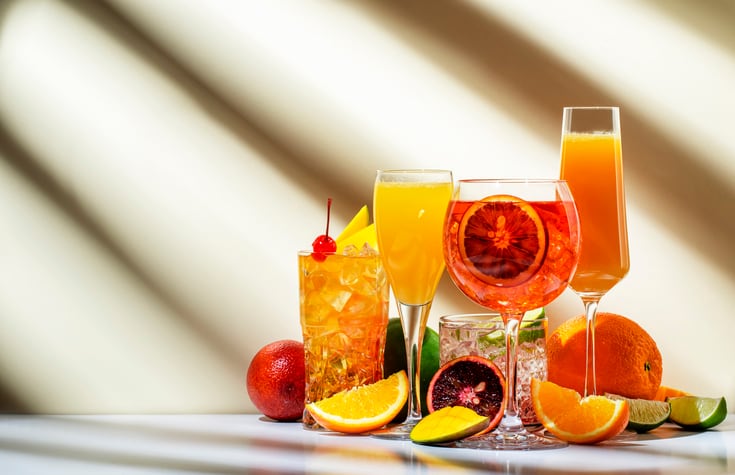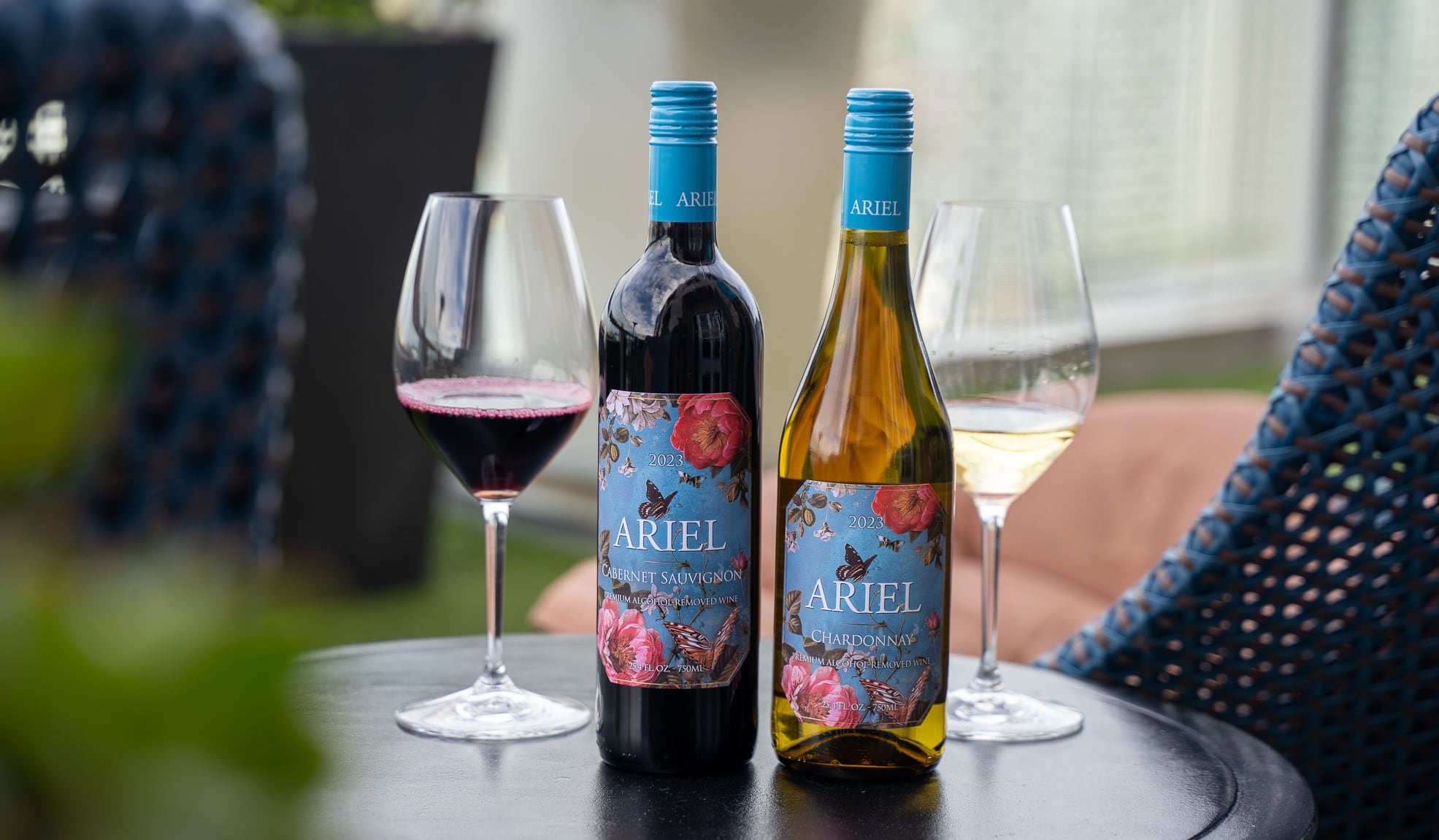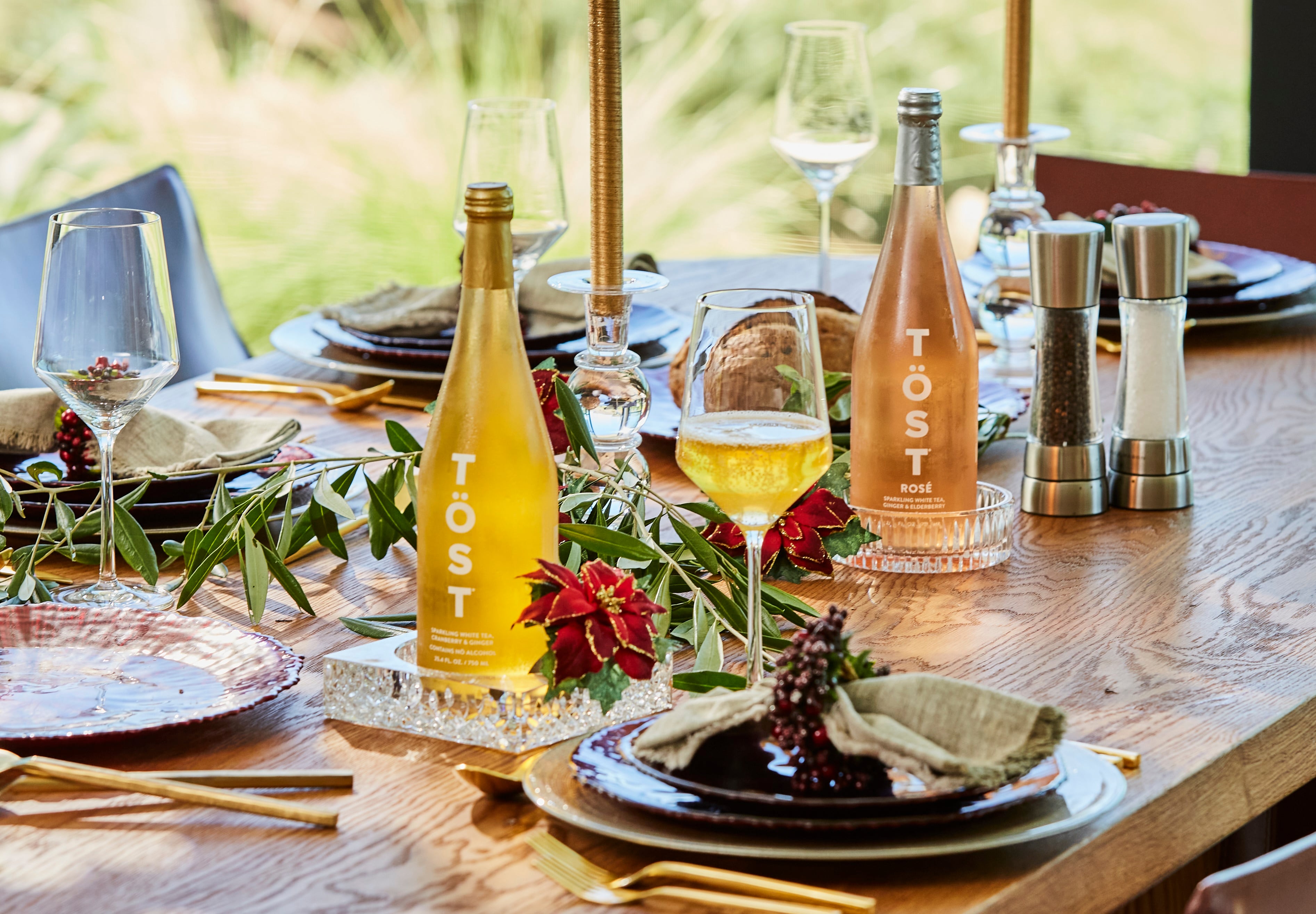The combined no/low-alcohol market is expected to expand by +4% volume CAGR through 2028.
That compares favorably to subdued growth in alcohol (where volumes can expect to see +1% CAGR between 2023 and 2028)
No-alcohol is predicted to drive the majority of this growth, while low-alcohol volumes remain broadly static, says the market intelligence firm.
No-alcohol market
The no-alcohol category is booming, with a +7% volume CAGR predicted for 2024-2028.
And this segment is expected to deliver incremental growth of $4bn+ by 2028.
What’s more, no-alcohol is recruiting far more new consumers into the category than low alcohol. It drew in an extra 61 million buyers in 2024 compared to 2022, whereas the low-alcohol sector drew in 38 million.
Why is no alcohol growing fast than low alcohol?
No-alcohol options cater for teetotal consumers, but their popularity is far from limited to this occasion. Sober-curious consumers, for example, often engage in the practice of zebra striping: switching between full and no alcohol options during the same event.
Meanwhile, zero alcohol products have fewer restrictions: opening up more opportunities in advertising, sales channels and ecommerce. They can also explore new outlets where alcoholic beverages would not typically be consumed or purchased.
Consumers clearly understand a zero alcohol proposition: whereas they may be less clear on where a low alcohol product fits in (a consumers needs to know, for example, that a typical spirit comes in at 30-40% in order to appreciate a low alcohol spirit at 20%).
However, the split between no and low varies between market (more on this in the UK spotlight below).
No-alcohol beer will continue to be a strong performer: predicted to grow at 7% volume CAGR 2024-2028.
That will see it continue to lead the future no-alcohol growth in absolute volume terms.
Global snapshot
IWSR’s data comes from assessing 10 key global markets: Australia, Brazil, Canada, France, Germany, Japan, Spain, South Africa, UK and US (together, these make up some 70% of low/no volumes)
But that growth rate will likely be surpassed by RTDs, albeit off a lower base, with 10% volume CAGR over the same period.
And no-alcohol’s share of total beverage alcohol is expected to increase to more than 3% by 2028.
Global markets
In particular, the share of the US total beverage alcohol market will double in that time (Brazil, Canada and the US will see higher growth in the no-alcohol segment in the near future, whereas growth is predicted to be more gradual in Spain, South Africa and Germany).
Key growth markets: US and Brazil
No-alcohol growth in the US (+18% volume CAGR 2024-2028) and Brazil (+10%) is expected to come from the recruitment of new consumers, increased frequency of consumption and increased incidence in both markets.
Growth in the US will come from a wider array of no-alcohol subcategories. In Brazil, however, growth will come almost entirely from beer.
Smaller markets (such as Canada and Australia) also offer attractive opportunities with relatively high growth rates (7.5% and 5% respectively) off a lower base.
Consumer trends
As expected, the data shows that regular no-alcohol consumption is driven by the younger Gen Z and Millennial cohorts.
Younger buyers are more likely to adopt an ‘occasional moderation’ strategy, limiting alcohol consumption to set events or periods or participating in alcohol-free challenges such as Sober October or Dry January.
This demographic is also the one most likely to bring in new recruits to the category, according to IWSR.
Consumer trends
In the UK, this popularity among younger people is evident, says Dan Harwood, managing director at alcohol-free wine brand Eisberg.
“The increase in the [low/no] market has been influenced by a significant shift in drinking habits of British people, particularly among younger demographics," he said. "Our research indicates a notable amount of younger generational leading the way with sober curiosity, embracing mindful drinking with trends such as zebra striping."
“We anticipate the continued expansion of the low/no category through diversified product offerings, innovative flavors, and enhanced production techniques that elevate quality standards.
“The movement is gaining additional traction through celebrity partnerships with alcohol-free brands and established premium labels entering the market. This broader acceptance is likely to result in increased availability of alcohol-free options, not only in retail settings but also in the on-trade."
Alcohol consumption declines
In line with global trends, alcohol purchases among no/low buyers are decreasing, particularly in the beer and wine categories. Across the 10 key markets, per capita consumption in liters of pure alcohol is at 80% of its level in 2000.
As the no/low category develops further and more products enter the market, consumers will make their choices on other factors besides moderation. Factors such as taste, availability and brand are increasing in importance.
Category evolution
"The low/no alcohol category is poised for significant growth and refinement in 2025," said Joshua James, owner of Ocean Beach Café, a fully non-alcoholic bar and bottle shop in San Francisco.
"High-quality brands are likely to gain recognition as leaders in the space as the market begins to differentiate the “cream of the crop.” Consumers can also expect to see more NA wines appearing on menus, along with further advancements in non-alcoholic pairing menus, especially in Michelin-starred restaurants.
"Beyond product offerings, social dynamics are also changing, with the emergence of “third spaces” like cafes with DJs, sober raves, experiential marketing, and other unique venues that appeal to younger generations seeking to socialize in innovative, alcohol-free ways. These shifts reflect broader cultural changes and are setting the stage for a new wave of social spaces and experiences."
“As the no-alcohol category matures, consumers want more than just an absence of alcohol,” said Susie Goldspink, Head of No- and Low-Alcohol Insights at IWSR.
“They want products that deliver on taste, complexity, and overall drinking experience. This evolution is pushing the category further, prompting brands to innovate and raise the bar in terms of quality and variety.”
This also opens the door for other products that are not direct analogues of alcohol categories: such as sparkling teas, hop waters, and vinegar-based switchels, says Goldspink.
Focus on the UK
In the UK, no and low alcohol drinks are outperforming a declining alcohol market.
Total beverage alcohol volumes declined by -2% between 2022 and 2023. But the overall no/low alcohol market showed volume growth of 47% from 2022-2023, with forecast CAGR of 19% from 2023-2028.
The low/no alcohol segment is expected to add an incremental value of £0.8bn by 2028.
In the UK the low-alcohol market growing fast: volume sales almost doubled in 2023 and IWSR forcasts 'considerable growth' over the next few years, particularly driven by low alcohol beer.
That can be explained by the fact that many beer and wine brands are lowering their ABV to take advantage of the UK's revamped excise duty regime, introduced in 2023.



